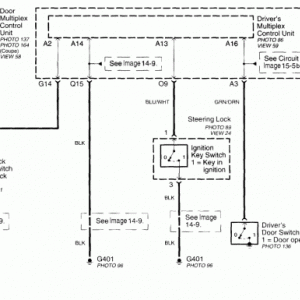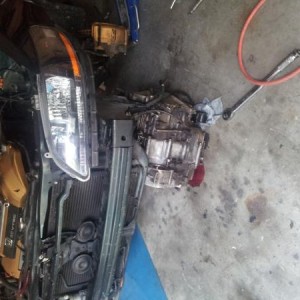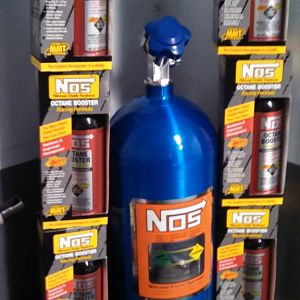So, you're saying VTEC in the F23 can engage as early as 2300 RPM's (when operating properly). However, if there is a VTEC malfunction (Low oil or vtec problem) the VTEC system will be disengaged, but Honda engineers made some type of bypass that allows you to still rev to 4K RPM's
Correct, but it's not necessarily a "bypass". It just disables VTEC. It's the design of the primary and secondary intake lobes that mechanically limits how high the motor can actually run. You can only spin a motor so long as it takes in air. Minimal intake valve lift + 4000rpm = Not much spinning.
blacknight said:
Hmmm.
I thought the Secondary (Taller) cam lobe is actuated when VTEC engages, which...according to you... can engage as early as 2300 RPM's.
But you're saying the taller cam lobe can still run up until about 4200RPM's.(just not as well)
Please explain how the taller (secondary) cam lobe (which only actuated when VTEC engages) can still (or even) run up to 4200RPM's when VTEC is disengaged?
Maybe this will help...
When not in VTEC, the engine runs one intake valve off of the primary lobe, and the other intake valve off of the secondary lobe. This means the valve on the secondary lobe has more lift than the primary's valve. This is for efficiency. Having one valve opened more than the other creates a cyclonic effect, which atomizes fuel more efficiently while also reducing the turbulence of the incoming air.
When VTEC engages, the solenoid opens up an oil passage that shoots oil down a 'rail' in the valve train that pushes little pins out of place in the rocker arms, and literally locks all three rocker arms (Primary, Secondary, and VTEC) together. Since the VTEC lobe is obviously the most aggressive, both rocker arms follow the VTEC lobe. This means that both intake valves are now opening the same amount and same duration, because they're following the VTEC lobe.
So, without the rocker arms being locked together into "VTEC", the motor is running off the primary and secondary lobes. That setup is what I was referring to that has a torque peak around 2400rpm. And like I said above, it doesn't make much power because it doesn't bring in much air, therefore the motor will have a very difficult time spinning over 4k rpm.
blacknight said:
Not trying to be a d!ck or anything, just need some clarification.
No offense taken. I'm just trying to provide some clarification.

blacknight said:
Also according to
Cars.com Max torq for the F23 is 4900RPM's
Yep. That's a standard WOT dyno, which means VTEC is helping out. If you were to drive your car up on a dyno and cut it off, then simply unplug the VTEC solenoid, start it up and do a pull, you'd come up with some very interesting results. Your torque peak would be around 2400rpm, because you'd only be dyno'ing the primary and secondary cam lobes. Literally just no VTEC. Try that a few times, and the car will soon go into safe mode with a 4,000rpm rev limiter because the ECU sees that VTEC isn't working. Makes sense with all the problems members are been having, huh?
blacknight said:
Maybe on a hill because you'll shift into a lower gear.
But I can't even see a 4cyl. 4speed auto car downshifting by using 25% of the throttle let alone engaging VTEC.
Now this is assuming you're talking about a F23, no cargo, one driver and on a leveled ground.
If you added some cargo or a couple of people to the equation, it maybe possible.
My personal opinion, 25% throttle is not enough to engage VTEC with little load in high gear.
It depends upon load and RPM's (what gear you're in)
Of course manual and auto trannys will vary
Auto and manual trannys are two completely different animals with this topic.
Auto transmissions won't respond the same as a manual would, for a few obvious reasons. An auto tranny is designed to work at the same load as the TPS. Meaning at light acceleration, the trans will shift at low rpms, and under heavy acceleration, the trans will shift at high rpms. All this means that there's no sure way to actually initiate VTEC engagement at a certain point, because the load is always variable.
On a manual trans, the driver is in direct control of the load, and therefore can change gears or throttle position to vary the load on the motor. For example. 1st gear at 1500rpm, 25% throttle is a rather light load, whereas 5th gear at 1500rpm, 25% throttle is nearly double the load as in 1st gear. That's why drivers with turbo'd cars don't go doing long 4th and 5th gear pulls. It's an extremely high load on the car, and putting that much load on it for that long at high rpm and full boost is asking for trouble.
I've found out that in a manual Accord, a SRI makes the crossover the most audible. Take the car and start off from a stop. At 2krpm shift into second, then at 2krpm again, shift into third, and punch it! Acceleration will be slow, but listen closely at 2300rpm, and the sound will change to a very deep and lopey sound. THAT's your VTEC...
blacknight said:
Why is the hottest car Honda ever created so complicated. LOL
It's how the complicated technology operates so transparently to the driver that makes them the great cars that they are.

 No, really... with a 3000lb car on level ground, ~25% throttle is enough load to satisfy the ECU's algorithm and activate teh VTECH.
No, really... with a 3000lb car on level ground, ~25% throttle is enough load to satisfy the ECU's algorithm and activate teh VTECH.









